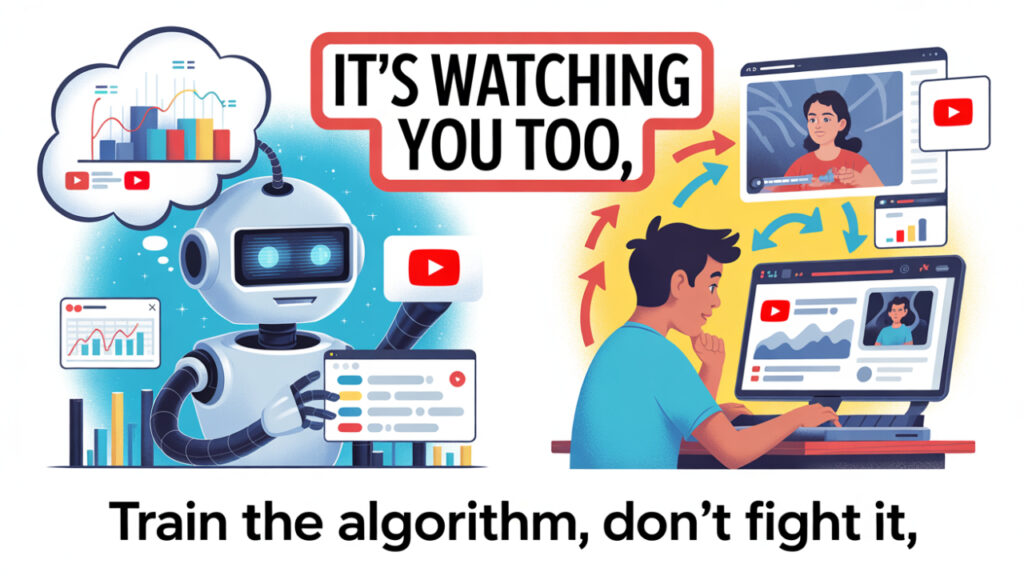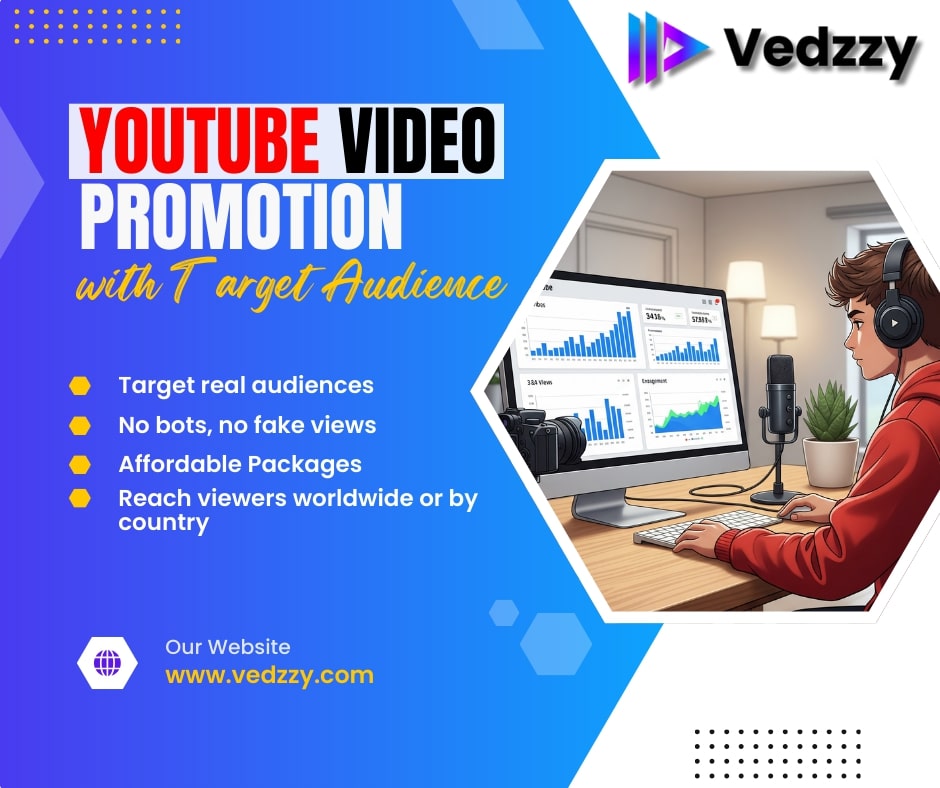
How the YouTube Algorithm Learns From You – And Why That Matters More Than Views
Posted on July 8, 2025 by James Martin
So, we’ve all heard it: “Beat the algorithm.” It’s everywhere—on forums, YouTube groups, and advice videos. But what if I told you something most creators never realize?
The algorithm isn’t just watching your viewers. It’s watching you.
That’s right. YouTube’s algorithm is smart. Not just because it knows what videos to suggest next, but because it learns from everything you do as a creator. The way you post, title, respond to comments, and even your own viewing behavior—it’s all being tracked. And it all feeds back into what YouTube decides to do with your content.
Let’s break this down in plain English. Because once you understand this, you’ll stop guessing what the algorithm wants—and start teaching it exactly who your videos are for.
1. It All Starts With How People Watch Your Videos
You’ve probably heard that “watch time” is important. But here’s the twist: the algorithm doesn’t just care about how long people watch your videos—it uses that information to make a prediction about your future videos.
If people consistently watch 70–80% of your videos, YouTube starts saying, “Alright, this creator holds attention well. Let’s try pushing their next upload to a similar audience.”
But if people always drop off after 30 seconds? The algorithm learns, “Maybe not worth recommending this one widely.”
It’s not just a score. It’s a feedback loop. Your audience teaches YouTube how to handle your future uploads.
2. Yes, YouTube Watches You Too
This might sound creepy, but it’s true. The platform is constantly learning what kind of content you create—based on how you behave on YouTube.
Let me explain:
- If you’re a cooking channel, but you spend all your logged-in time watching prank videos.
- If you comment on random crypto videos from your brand account.
- If you like and save music videos when you’re logged in as your business channel.
Guess what?
That data becomes part of your “creator profile.” And YouTube might get confused about what kind of audience you’re targeting.
Solution? Use a separate personal account for your own viewing. Keep your creator account focused on your niche. Yes, this small change can actually help.
3. Your Content Creates a “Pattern”
Imagine the algorithm as a really smart assistant—it notices patterns.
- You post every Wednesday at 6pm? It remembers.
- Your thumbnails always use bright red and bold text? That’s part of your brand.
- Your videos get good engagement after 24 hours? YouTube starts prioritizing showing your content early.
On the flip side, if you constantly change your format, title style, or video length, the algorithm has a harder time figuring out who to show your content to.
Bottom line? The more consistent you are, the easier it is for YouTube to know where to place you.
4. Titles, Thumbnails & Trust
Here’s something people don’t talk about enough: clickbait kills trust.
Let’s say your title says:
“How I Made $10,000 From YouTube in 1 Week” but your video is just you talking vaguely for 9 minutes with no proof.
People will bounce fast. The algorithm will notice the poor watch time and click-through rate—and it’ll learn that your titles can’t be trusted. This hurts your whole channel’s performance over time.
So while catchy titles are important, never promise what you can’t deliver. Keep the trust strong, and YouTube will reward you with more reach.
5. Sudden Changes Can Confuse the Algorithm
Let’s say you’ve been running a fitness channel for a year. Then suddenly, you start uploading travel vlogs.
Even if they’re amazing, YouTube won’t know who to show them to—because your current audience subscribed for workouts, not beaches.
It’s not that you can’t change your content. You absolutely can. But do it gradually.
Maybe:
- Mix in one travel video every few uploads.
- Explain to your audience what’s changing and why.
- Rebuild the algorithm’s understanding of your new content path.
Give it time to adjust. You’re re-training it, after all.
6. You’re Not Competing With Everyone – Just Your Own Data
Here’s a mindset shift that’ll change the game:
You’re not fighting other YouTubers. You’re building your own algorithm bubble.
Your channel builds its own behavior profile, audience pattern, and data feedback loop. The more you work within your own system—understanding what works for your viewers—the better YouTube gets at promoting your videos.
So stop comparing your growth to someone else’s. Their algorithm is trained on a completely different data set.
Final Thoughts: You’re Training It Every Day
YouTube isn’t a slot machine. It’s a smart system that pays attention to what you do—and what your audience does with your content.
Every title you write, every thumbnail you test, every upload schedule you stick to… it’s all sending a message.
The more consistent and intentional you are, the more you teach YouTube who to send your content to.
So instead of trying to “beat” the algorithm, train it. Treat it like a student that’s learning from you.
Categories: Uncategorized

